book review
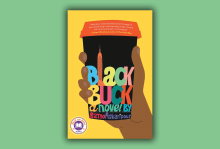
IN HIS DEBUT novel Black Buck, Mateo Askaripour tackles race in the world of startups. Doubling as a kind of self-help manual for Black people in sales, the novel’s structure and tone allow it to hold multitudes: the dark, the hopeful, the comical, the horrific. But at its heart, this is also a novel about community.
We meet Darren, a 22-year-old shift supervisor at Starbucks who lives with his mother in Bed-Stuy, Brooklyn, New York. They’re not poor, he insists, pointing to the home his mother owns. But this doesn’t negate the harsh conditions she is exposed to at her factory job. Still, life is good—and if a day is not “good,” then at least he can come home to a warm dinner with his mother, girlfriend, best friend, and the neighbor who is practically family. Darren would be content, if not for a few reminders that he could aim higher, achieve more. He was, after all, valedictorian of his class at the Bronx School of Science.
Enter Rhett, the charismatic CEO of Sumwun, a startup located on the 36th floor of the building where Darren works. When Darren smoothly attempts to sell Rhett a new drink, Rhett sees his potential and recruits him. This is how Darren becomes Buck, the first Black man at Sumwun. Racist shenanigans ensue, popular among them: Has anyone told Darren that he looks like Martin Luther King Jr.? Sidney Poitier? Dave Chapelle? Against a background of overt racism, appropriation, and consumerism, the cult-like culture of Sumwun is unforgiving. Meanwhile, the company’s mission is opaque, rife with danger and risk. What impact are they really making? Are they helping anyone? Where is all the money coming from?
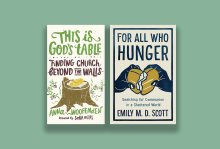
LONG BEFORE the coronavirus inspired congregations to gather outside of a sanctuary, Emily M.D. Scott and Anna Woofenden birthed congregations (St. Lydia’s Dinner Church in Brooklyn, N.Y., and the Garden Church in San Pedro, Calif., respectively) that shed pageantry and focused on the basics: bread, cup, and looking-a-person-deep-in-the-eye connection.
Around a dinner table and in an urban garden, these two scrappy congregations grew through environmental disasters (Hurricane Sandy and a multiyear California drought), confrontations with external and internal classism and racism, and the joys and griefs of bringing a new vision of ekklesia into the world.
It is rare to see the tangled roots of a church plant. Yet, both authors share insecurities about failed worship services, unstable budgets, and the long loneliness that comes with church leadership. The vivid character development, precise detail, and theological depth of both narratives make the reader feel at home in the possibility of worship beyond pew-lined sanctuaries.
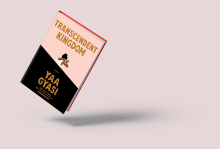
IN THE NOVEL Transcendent Kingdom, Gifty is a doctoral candidate in neuroscience at Stanford University, aiming to identify the neural pathways that suppress reward-seeking behavior. She is at the lab trying to keep two mice from tearing each other apart when her mother’s pastor calls. Gifty’s mother is sick, severely depressed ever since her son, Gifty’s brother Nana, died of a heroin overdose. Now, years later, Gifty wants nothing more than to bring her mother back to life.
In her second book, author Yaa Gyasi continues to grapple with familial loss and inheritance. But while her debut novel Homegoing examined the legacy of slavery, Transcendent Kingdom follows a young woman as she recalls her immigrant family’s triumphs alongside their devastating fight with depression and addiction. Through her methodical (scientific, spiritual, and philosophical) inquiry, Gifty tries to keep their memories alive.
What happens when the past haunts and overwhelms the present? At 28, Gifty’s life is lonely lab work and rumination, a mother unresponsive save for her hum, a father so distant he is not called by name. Even when Gifty is silent, the past reverberates loudly in her relationships. If she can find answers to her research questions, perhaps one day someone could be saved from the throes of addiction. But who will save her?
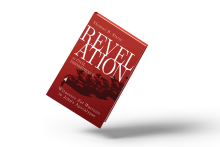
JOHN LEWIS died the week I read this book. No American alive in 2020 was a better witness to the courage of nonviolent civil disobedience than Lewis. Ironically, that same week “warriors” from the federal government descended, uninvited and unidentified, on Portland, Ore. Violence exploded. The Bible’s final book, Revelation, seems more relevant than ever.
Thomas B. Slater’s slim volume is not a typical commentary on the biblical book, analyzing all its chapters and decoding all its symbols. Instead, Slater focuses on the political situation of seven small house churches in Roman-dominated Asia Minor (now western Turkey), to whom John of Ephesus wrote (Revelation 2-3). These believers lived in cities where temples or shrines represented the imperial cult, and all subjects were expected to offer sacrifices to the current “divine” emperor.
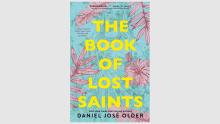
Daniel José Older’s novel is a powerful meditation on love and betrayal in times of revolution.
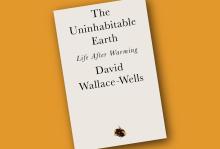
YET ANOTHER BOOK about climate change. What could it possibly say that we haven’t already heard?
Plenty, it turns out.
David Wallace-Wells’ extraordinary and chilling book The Uninhabitable Earth: Life After Warming gives an overview of the overwhelming scientific consensus that the planet is warming and changing at rates never seen before. But the real value for its readers are the 100 brutal pages of excruciating details about what life will be like if they do not quickly make extraordinary changes to their energy consumption. Wallace-Wells’ central message is that we are living in a time hotter than any other time humans have ever lived in, and we cannot go back in our lifetimes. And looking forward is nothing short of terrifying.

IN HIS ESSAY “The Land Ethic,” environmentalist Aldo Leopold tells a story from The Odyssey in which Odysseus, upon returning to Troy, hangs a dozen slave girls for misbehaving in his absence. The act, Leopold writes, was not one of ethics but of property: “The ethical structure of that day ... had not yet been extended to human chattels.” Leopold uses this as an example of how our ethical structure has expanded over history. This expansion of the moral circle is a common thread in history, encompassing, slowly, people and things that were once outside moral consideration.
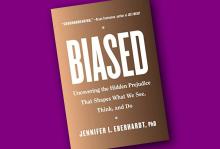
Biased is for every person who claims to not see color. As someone who navigates that phrase regularly in my professional anti-racism work, I was thrilled to read a book that swiftly debunks that statement—with data to back it.
Jennifer Eberhardt thoroughly outlines how racial bias is unavoidable in a society that historically institutionalized white supremacy, and she incorporates case studies, personal experiences, surveys, scientific research, and numerical data to prove it. She walks us through examples of various settings and institutions where this bias presents itself: policing, incarceration, socioeconomic status, schooling, housing, employment, customer service, personal interactions. All confirming that racial bias is, in fact, everywhere.
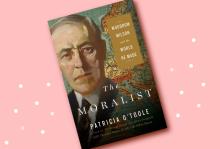
IN SPRING 1917, as the stark brutality of World War I continued into its fourth year, U.S. President Woodrow Wilson reversed his advocacy for neutrality and declared war on Germany. This controversial decision allowed a financially strapped Britain to hold out against the German onslaught.
As the war ended in November 1918, Wilson, the tight-lipped, egotistical former Princeton University president and governor of New Jersey, emerged as a great hero in Europe. “Thousands ... knelt along railway tracks to offer prayers as he passed,” writes historian Patricia O’Toole in her recently released biography, The Moralist: Woodrow Wilson and the World He Made. “Wilson ... beamed and bowed and tipped his silk hat times without number.”
Back in the U.S., Wilson was not so popular. His party, the Democrats, lost both houses of Congress. On Oct. 2, 1919, Wilson suffered a paralyzing stroke after a month of travel to build support for the Treaty of Versailles to formally end World War I.

IMAGINE AN UNLIKELY DUET. One singer is National Review senior editor Jonah Goldberg, a conservative political columnist who admits he indulged in “smash-mouth” rhetoric and once did a video mocking “social justice” as meaningless mush. The other is religion scholar Diana Butler Bass, a progressive liberal and author who champions social justice as central to a life of faith. Both published books this spring, and as they made separate media rounds, they sang the same song—an ode to gratitude.
Gratitude is having a big turn in the spotlight right now as influential writers, university researchers bolstered with millions in foundation grant funds, #blessed social media mavens, and more tout thankfulness as a boon to one’s spirit and health.
The claims are mighty for the benefits of thankfulness to others, to God, to Mother Nature. Bolster peace in the world—or at least your own small corner of it—via the virtue that could, by opening a path to moral consensus, save our society from fracturing in tribalism, fear, and frustration. Lower your blood pressure. Enhance your marriage. Find joy and avoid the sin of being an ingrate. Books and websites offer instructions for keeping a gratitude journal (feel measurably better about your life in a month!) or the recipe for a gratitude letter (allow 15 minutes, stay under 300 words, deliver in person if possible).
A recent study found that people who wrote “gratitude letters”—turning away from the “toxic emotions” stirred by negative thoughts to elucidate thankfulness—reported significantly better mental health four weeks and 12 weeks after their writing exercise ended, according to the online magazine of the University of California, Berkeley’s Greater Good Science Center. The center is the nexus for the Expanding the Science and Practice of Gratitude project, with more than $3 million in research grants and outreach programs.
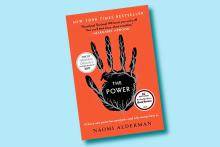
THE POWER IS THE fourth novel by Naomi Alderman, protégé of award-winning author Margaret Atwood (The Handmaid’s Tale). It centers on the discovery among the world’s women that they have a unique muscle, called a “skein,” embedded into their skin that when activated gives them an electric power that they can use to both hurt and heal.
The story is told through the narration of four protagonists—Tunde, Allie, Margot, and Roxy. Tunde is a journalist who provides the reader a global perspective on overturned social orders and flipped cultural norms through his travels. Allie gives us a glimpse into the religious order forming around women and lightning. Margot is the mayor of an undisclosed U.S. city and walks the reader through the governmental and political consequences of the power. Roxy’s involvement in organized crime affords the perspective of people leveraging a new social order for financial gain.
Alderman explores in depth the role reversals between men and women. Gender-based power structures and assumptions of the previous order do not last as more women discover the power within themselves. Alderman creates a world in which men are seen as less-than, echoing stereotypes that burden women in our world: “Men are dangerous ... Men are less intelligent, less diligent, less hard-working ... Men are more likely to suffer from diseases and they are a drain on the resources of the country.”
Does this novel depict a dystopia or a feminist utopia?

SHE: ROBED AND WORDLESS, by Sister Lou Ella Hickman, is a word-feast of poetry about often-overlooked women in the Bible.
Hickman creates a beautiful narrative and poetic arc as she explores biblical terrain. I celebrate how the book gives voice and imagery to our foremothers. Each poem is well-crafted, and the book has been organized to guide readers into the question editor Tom Lombardo asks in his introduction to the book: “After Eve, who is the next woman named in the Bible?”
Hickman, a Catholic sister, is an oft-published poet who in this book weaves together with striking lyrical threads scriptural narratives and her own substantive imaginings about the hopes, dreams, and fears of women about whom we know very little. Many women in the Bible are unnamed and have no voice, but Hickman tunes our ears to listen for these ancient unheard ones. In doing so she invites us to see and hear the countless but wisdom-filled “robed and wordless” women in our communities today.

THE ART OF ... book series from Graywolf Press focuses on writing craft and criticism. In each compact volume an accomplished writer takes on a single element or theme. The most recent entry in the series is The Art of Death, by Edwidge Danticat.
Danticat’s reflections on a wide variety of literature that wrestles with death—from Taiye Selasi’s debut novel, Ghana Must Go, to C.S. Lewis’ A Grief Observed—offer insights for readers as much as for writers. She explores the complicated emotional landscape of death and mourning, but also the myriad ways, tangled in questions of both justice and mercy, that death comes: accident, illness, deadly disasters, suicides, executions.

IN THE EARLY 1940s, Raoul Wallenberg was a slight, balding young man living modestly in Stockholm. He worked for a trading company that imported Hungarian poultry to Sweden. Wallenberg’s colleagues were mainly Hungarian Jews.
He had trained in the U.S. to be an architect. But on his return to Sweden, Wallenberg discovered that he didn’t have the engineering courses required to be hired in his homeland. His other career alternative, banking, also eluded him. The extended Wallenberg family owned one of Sweden’s most prosperous banks, Stockholms Enskilda Bank. But they found Wallenberg to be overly talkative, too artistically inclined, and having a penchant for drama that did not signal, for them, the makings of a top-drawer Swedish banker. So Wallenberg fell into depression, feeling that he was a failure, now known to his family disparagingly as “the grocer.”
Yet this unfulfilled young man would become, virtually overnight, one of the great heroes of World War II.
Veteran Swedish journalist Ingrid Carlberg has written a remarkable, nuanced, 600-page biography featuring extensive original research and new material: Raoul Wallenberg: The Heroic Life and Mysterious Disappearance of the Man Who Saved Thousands of Hungarian Jews from the Holocaust. The English translation of this award-winning work was released earlier this year.
When the Germans sent 500 Norwegians to Auschwitz in late 1942, the outraged Swedish government, which had remained neutral, declared that Sweden would accept any Jew who could make it to the Swedish border. They also decided to set up a special humanitarian aid mission in Budapest to help Hungarian Jews being annihilated by Hitler’s troops. A colleague at the trading company immediately recommended Wallenberg to the Swedish Foreign Mission to head the new mission.
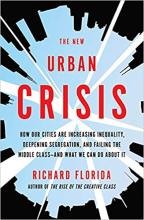
FIFTEEN YEARS AGO, Richard Florida argued in The Rise of the Creative Class that cities fostering brainy interaction, creativity, and innovation would thrive, since modern capitalism was increasingly knowledge-based. His projections were acclaimed by artsy, back-to-the-city types (including many church planters) and scorned by activists and the low-income residents that gentrification displaced.
The critics were on to something, because since then many big cities have indeed gotten sexier, but not necessarily more reliable, especially for the masses. From 2006 to 2014, average incomes declined by 6 percent, while average rent prices soared by 22 percent. Today, about 21 million American renters are putting 30 to 50 percent of their income toward rent, with 30 percent representing the “cost-burdened” threshold.

“YOU HAVE MADE us for yourself, O Lord, and our hearts are restless until they find their rest in you.”
These oft-quoted words, delivered from pulpits, books, and classrooms through the centuries, came from the theological giant St. Augustine. Augustine is widely noted as one of the most important theologians in Western Christianity. His acclaimed works, most notably Confessions and City of God, have shaped the thinking and spirituality of pastors, scholars, and regular church-going folk.
However, even with all the pages written about Augustine, there’s been a missing element that hasn’t been significantly excavated, namely, Augustine’s mestizo makeup. This is why historical theology scholar Justo González’s new book, The Mestizo Augustine: A Theologian Between Two Cultures, is a welcome and much-needed contribution to Augustinian theology.
The central thrust of The Mestizo Augustine is the exploration of the “mestizo” nature of Augustine and his theological journey. The word “mestizo” (which flows out of Latino/a theology) is a Spanish word that captures what it means to be of mixed heritage. Being mestizo is a recognition of hybridity or, as González notes, “to belong to two realities and at the same time not to belong to either of them.” This mestizaje lens is needed to better understand Augustine.
González unpacks the African/Roman hybridity of Augustine. This hybridity manifested in language, philosophical frameworks, and traditions. For example, being mestizo, Augustine lived in two worlds as it pertained to understanding the concept and practice of authority. González notes that in African culture, authority rested in the holiness, wisdom, and charisma of a leader. In Roman culture, authority did not rest on individual character but “in the function to which that person had been assigned.” Being mestizo meant Augustine needed to wrestle with the implications of these two worlds.
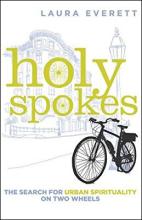
I LEARNED HOW to bike relatively late in life. I was 23, and it cut my commute in half. Since I’d been walking an hour each way for a night shift that started at 11 p.m., that meant a lot. My guru was an elder from my local church who lived across the alley. He taught me how to change a tire, gears, and my life. He showed me hospitality by teaching me about my bike, but it extended much further than that.
UCC minister Laura Everett does much the same thing in Holy Spokes . She uses the metaphor of a bike as a lens to discuss the broader issues of how to relate to people, the Earth, and God: Mostly how, to use Brother Lawrence’s term, to practice the presence of God.

MARTIN LUTHER KING JR. did not initiate black prophetic preaching; he was, rather, initiated into it. Rev. Kenyatta Gilbert’s A Pursued Justice: Black Preaching from the Great Migration to Civil Rights is a theological origin story about the distinctive rhetorical tradition that is black prophetic preaching.
The text begins by naming the social crisis of the Great Migration—shorthand for a massive demographic shift of 1.5 million African Americans from the South to the North between 1916 to 1940—as an essential context for understanding black prophetic preaching. This tradition of Christian proclamation—which Gilbert calls “exodus preaching”—is framed in the context of black pastors seeking to respond theologically to the pressures of injustice, prejudice, and segregation that black migrant workers navigated in Northern urban communities in the inter-war period. Of special note, Gilbert surfaces the social gospel tradition of African-American clerics who, unlike white social gospel leaders Walter Rauschenbusch, Josiah Strong, Washington Gladden, and others, demonstrated a desire to not only build institutional churches that confronted industrial evils but also to address systemic issues of lynching, police brutality, and so on.
While the entire book makes an important contribution to the study and practice of preaching, the third chapter, in particular, sparkles with insight. Within it, Gilbert marshals a solid cast of intellectuals—including Paulo Freire and Zora Neale Hurston—to land on a four-part definition of prophetic preaching. He contends that prophetic preaching unmasks systemic evil, remains hopeful in difficult situations, aids listeners in naming their own reality, and displays a will to adorn. The criterion of adornment—with patient attention to aesthetic categories of beauty, vision, and desire—is some of the most creative theological writing, in any genre, that you are likely to read. On a practical level, the definition provides a yardstick against which working preachers and homiletics faculty can assess the strength of contemporary pulpit work.
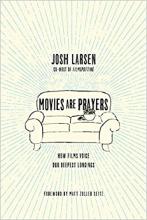
AS A TEENAGER growing up in a church setting that discouraged engaging with movies, books, or music deemed a “bad influence,” I remember frequently being confused about pop culture, particularly when it came to what films I was “allowed” to watch. Was I wrong for wanting to see Taxi Driver ? For identifying with Saved? Was it a sin to watch The Last Temptation of Christ?
The answer to all these questions, of course, is “no,” but the sentiment behind them is understandable. The easiest metric for Christians to judge a film’s quality is the measure of its “objectionable” content, regardless of what that content says about the filmmaker’s intent, or the political or cultural attitudes under which it was conceived. The truth, however, is that all art—whether spiritual or secular in origin—has something to express about the world: joy in its beauty, anger at its injustice, a whole spectrum of emotions and ideas that reflect the human experience.

IN 1967, I TRAVELED with activist friends from New York to Baltimore to support four people there who poured blood on the 1A files that compelled young men into the military and the massacre in Vietnam. The “Baltimore 4,” as they became known, committed the first of some 100 actions focused on draft boards, the source of cannon fodder in the ever-escalating wars in Indochina. It was during one of these trips that I met Willa Bickham and her husband, Brendan Walsh. Our friendship has been rich, varied, invaluable.
In The Long Loneliness in Baltimore, Walsh and Bickham tell of their nearing 50 years serving the people of Baltimore as the Viva House Catholic Worker. It is a story that needs telling, especially now in this country that is profoundly ruptured by economic and racial conflict.
Try as the politicians and the press might, it is impossible to disengage economics from race. Bickham and Walsh know this intimately, living in the midst of an impoverished black neighborhood. They have experienced drugs, murders, robberies, and destruction right outside their front doors. The alley that runs beside their home, thanks to their creativity, is marked with memorials to men and boys shot and killed there. Repeatedly, after almost every major killing, Walsh has told the press what has become crystal clear to him: that in Baltimore City (as in too many cities), selling drugs is the only job that exists for all-too-many people of color.
In the garden outside Viva House is the Hope Stone. In Bickham’s script, it quotes Martin Luther King Jr.: “We will hew out of the mountain of despair a stone of hope.” That is the invitation to all who come to Viva House for whatever reason, to meet whatever need. Each is sure to receive respectful and caring human interaction, food, fellowship, help with bills, a place to escape the cold or heat or rain, a place of justice and peace.